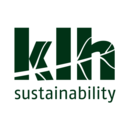Circular economy
A circular economy is based on the principles of designing out waste and pollution, keeping products and materials in use, and regenerating natural systems. (ref Ellen MacArthur Foundation)
This is in contrast to the traditional 'linear' model which is based on the concept of 'make, break, and discard' or 'take, make waste'.
The circular economy is a concept in which everything is engineered to be constantly reused or recycled. It requires rethinking of design, manufacturing, selling, re-using, recycling and consumer ownership to keep resources in use for as long as possible and to extract maximum value.
'Business as usual' sees contractors and the supply chain following the waste hierarchy; reduce, reuse and recycle, to a greater or lesser extent. But the concept of the circular economy goes beyond the 3 R's and aims to maximise total material resource efficiency.
There is massive economic advantage for businesses adopting a circular economy. The UK Department for Environment, Food and Rural Affairs (Defra) calculates profit of up to £23 billion per year for UK businesses through low cost or no cost improvements and McKinsey estimates a global value of $3.7 trillion per year (ref. WRAP).
This article was originally created by Ritu Rajashekar of --KLH Sustainability as part of an ongoing series of posts for Designing Buildings Wiki and has been updated by the CIRCuIT project
[edit] Useful references
- Practical application of circular economy principles for structural engineers
- Applying circular principles to the design process for structural engineers
[edit] Related articles on Designing Buildings
- Circular Construction.
- 5 things leaders can do to create a truly circular economy.
- A social, circular economy.
- Blockchains will change construction.
- BREEAM Construction waste management.
- Building Back Better: Circularity and BREEAM.
- Building back better with BREEAM.
- Building Revolutions - review.
- Cement and concrete companies release 2050 Climate Ambition.
- Circular economy models.
- Circular economy - transforming the worlds number one consumer of raw materials.
- Composting.
- Construction waste.
- Cradle to cradle product registry system.
- Deconstruction.
- Design for deconstruction.
- Economic sustainability.
- End of life potential.
- England metro mayors work to deliver ambitious climate action.
- Examining the 2021 construction materials shortage.
- Green supply chain management.
- Impact of the sharing economy on construction craft labour and equipment markets.
- Life cycle.
- Products as a Service PaaS.
- Quantification of construction materials in existing buildings (material intensity).
- ReCon Soil project.
- Recyclable construction materials.
- Recycling.
- Reduce, reuse, recycle.
- Renewable energy.
- Reused construction products.
- Sustainable materials.
- Sustainability.
- Waste management plan.
- Waste management plan for England.
About the wiki
Anyone is welcome to use and contribute to the wiki in different ways.
[edit] Engaging with the wiki
You can:
- Contribute to existing articles
- Create articles
- Share articles through social media and other channels
- Contact the CIRCuIT project to let us know what you think and how we can improve
[edit] Add your own content
To contribute to or create an article, you can follow these steps:
- Register as a user
- Read through the editorial policy and guidance on writing and contributing to articles
- See the detailed help page on tips on writing wiki articles
- Try editing a test article
- If editing an article, select 'Edit this article' underneath the article title
- If creating a new article, select 'Create an article'. In the 'Select categories' area, expand the 'Industry context' list and tag 'Circular economy' to add your article to this wiki
[edit] Who is this wiki for?
The articles contain information on implementing circular economy approaches in construction that could be relevant to:
- Architects
- Construction contractors
- Designers
- Developers, owners, investors
- Engineers
- Landowners
- Manufacturers and supplier
- Universities and research
- Urban planners
[edit] About CIRCuIT
The Circular Economy wiki is supported by the Circular Construction in Regenerative Cities (CIRCuIT) project, which is funded by the European Union's Horizon 2020 research and innovation programme. CIRCuIT is a collaborative project involving 31 ambitious partners across the entire built environment chain in Copenhagen, Hamburg, Helsinki Region and Greater London. Through a series of demonstrations, case studies, events and dissemination activities, the project will showcase how circular construction practices can be scaled and replicated across Europe to enable sustainable building in cities and the transition to a circular economy on a wider scale.






